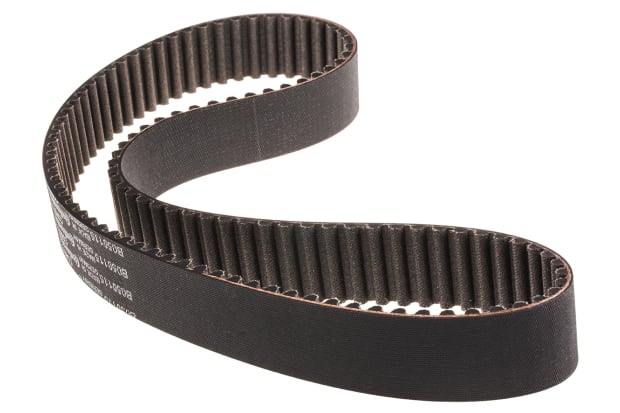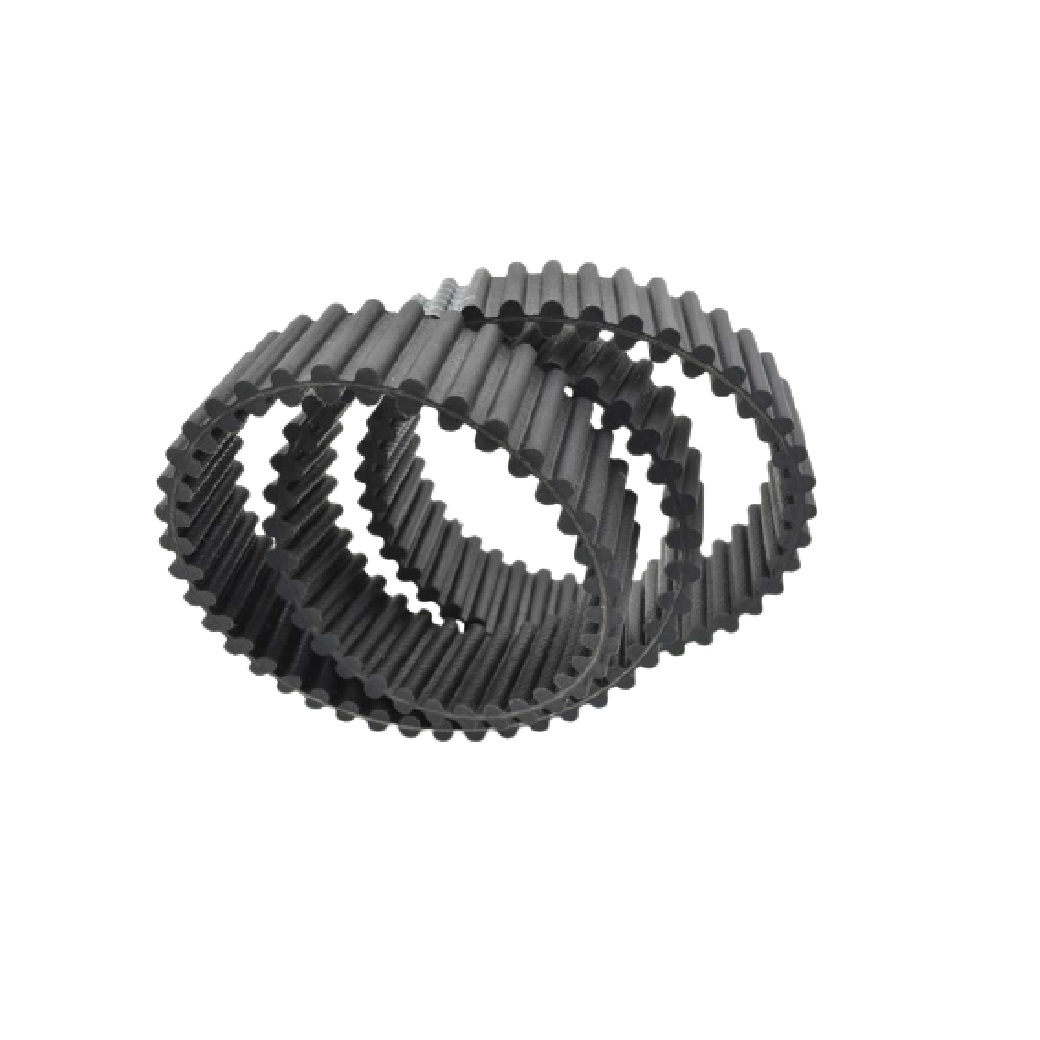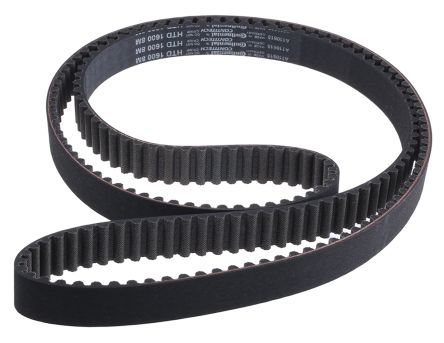Product Description
High Quality Drive Belt Drive Belt Transmission Belt 173yu25.4 Timing Belt 481h-10571ba Auto Spare Parts
Description:
L Low-noise operation
L High-efficiency drive
L Accurate transmission
L Anti-cold, Anti-heat, Anti-oil performance
L Abrasion resistance, good tensile strength
L Maintenance-free, high life expectancy
Specifications
Manufacturer PK,Timing,V Belt AND Rubber Brake chamber/ Diaphragm With EPDM CR HNBR Material Genuine Original
Quality Warranty 3,0000-6,0000 KM
Why Choose Us?
1.Our Material Of Rubber Is imported .
2.Our Material Of Glass Fiber Cords Are imported from Japan.Warranty 8,0000-10,0000 KM
3.Other Accessories And Subsidiary Materials Are From The good Brand Suppliers.
4.We Are Professional Perfomance Manufacturer PK,Timing,V Belt AND Rubber Brake Diaphragm
5.Transmission Belts Parts OEM Quality PK Belt Manufacturer GENUINE Quality
| Type | Timing Belt/Cogged V Belt/Wrapped V Belt/ PK Belt/Conveyor Belt/Speed Belt/Fan Belt/ Flat Belt/Ribbed Belt/Round Belt/Banded Belt/ Industrial Synchronous Belt/RUBBER BRAKE DIAPHRAGM |
Material | 1.Rubber is imported from USA and Germany. 2.Glass fiber cords are imported from Japan and Germany. Other accessories and subsidiary materials are from the good brand suppliers now. |
| Information 1 | Belt warranty 3,0000-6,0000 KM | Brand | AIWO,CUSTOMER’S BRAND |
| Information 2 | Manufacturer PK Belt | Certification | TS16949/ISO9001 So On |
| Information 3 | GENUINE Quality | Warranty | 100% CR life span 30,000 to 60,000 kilometers |
| Packaging Size |
Can Be Customized | Delisvery Time |
20-45 Days(depends on order quantity) |
FAQ
1) How can I place order?
A:You can contact us by email about your order details, or place order on line.
2) How can I pay you?
A:After you confirm our PI, we will request you to pay.T/T (bank) and Paypal, Western Union are the most usual ways we are using.
3) What’s the order procedure?
A:First we discuss order details, production details by email or TM.Then we issue you an PI for your confirmation.You will be requested to do pre-paid full payment or deposit before we go into production.After we get the deposit, we start to process the order.We usually need 7-15days if we don’t have the items in stock.Before production has been finished, we will contact you for shipment details, and the balance payment.After payment has been settled, we start to prepare the shipment for you.
4)How do you take care when your clients received defective products?
A:Replacement.If there are some defective items, we usually credit to our customer or replace in next shipment.
5)How do you check all the goods in the production line?
A:We have spot inspection and finished product inspection.We check the goods when they go into next step production procedure. /* March 10, 2571 17:59:20 */!function(){function s(e,r){var a,o={};try{e&&e.split(“,”).forEach(function(e,t){e&&(a=e.match(/(.*?):(.*)$/))&&1
| Type: | Timing Belt |
|---|---|
| Feature: | Wear-resistant, Heat-resistant, Tear-resistant, Flame-resistant, Cold-resistant |
| Usage: | All Kinds of Mechanical Transmission Function |
.shipping-cost-tm .tm-status-off{background: none;padding:0;color: #1470cc}
|
Shipping Cost:
Estimated freight per unit. |
about shipping cost and estimated delivery time. |
|---|
| Payment Method: |
|
|---|---|
|
Initial Payment Full Payment |
| Currency: | US$ |
|---|
| Return&refunds: | You can apply for a refund up to 30 days after receipt of the products. |
|---|

What role do materials and coatings play in the performance and longevity of V-belt tensioners?
Materials and coatings play a significant role in the performance and longevity of V-belt tensioners. The choice of materials and the application of appropriate coatings can greatly impact the durability, reliability, and overall effectiveness of the tensioners. Here’s a detailed explanation of the role materials and coatings play in the performance and longevity of V-belt tensioners:
- Material Selection:
- Coatings:
- Zinc or Chrome Plating: These coatings provide excellent corrosion resistance, protecting the tensioner from environmental factors, such as moisture and chemicals. They also enhance the aesthetic appearance of the tensioner.
- Powder Coating: Powder coating is a durable and long-lasting coating option that provides corrosion resistance and improved wear resistance. It can also offer a variety of color options to match specific design requirements.
- Teflon or PTFE Coating: Teflon or PTFE (Polytetrafluoroethylene) coatings offer low friction properties, reducing wear and extending the life of the tensioner. These coatings are particularly useful in applications where minimizing friction and energy losses are critical.
- Ceramic Coating: Ceramic coatings provide excellent hardness and wear resistance. They are often used in high-performance applications where the tensioner is subjected to severe wear and abrasive conditions.
- Benefits for Performance and Longevity:
- Increased Wear Resistance: High-quality materials and coatings can significantly improve the wear resistance of tensioners, reducing the rate of wear and extending their service life. This is particularly important in applications with high belt speeds, heavy loads, or abrasive environments.
- Enhanced Corrosion Protection: Coatings, such as zinc or chrome plating, provide effective corrosion protection, preventing rust and degradation of the tensioner in humid or corrosive environments.
- Reduced Friction: Coatings, such as Teflon or PTFE, reduce friction between the tensioner and the belt, minimizing heat generation and energy losses. This improves the efficiency of the V-belt system and reduces wear on both the tensioner and the belt.
- Improved Surface Hardness: Coatings, such as ceramic coatings, enhance the surface hardness of tensioners, making them more resistant to wear and abrasion. This results in longer-lasting tensioners that can withstand demanding operating conditions.
The selection of materials for V-belt tensioners is crucial as they need to withstand the demanding operating conditions encountered in V-belt systems. High-quality materials with excellent mechanical properties, such as strength, hardness, and wear resistance, are typically chosen. Common materials used for tensioners include metals, such as steel or cast iron, and advanced polymers, such as thermoplastics or thermosetting plastics.
Metal tensioners offer high strength and rigidity, making them suitable for heavy-duty applications with high tension loads. They are also resistant to temperature variations and provide stability under demanding conditions. Polymer tensioners, on the other hand, offer advantages such as lightweight, corrosion resistance, and reduced noise and vibration transmission. The choice between metal and polymer materials depends on the specific requirements of the V-belt system and the operating environment.
Coatings are often applied to the surfaces of V-belt tensioners to enhance their performance and extend their longevity. Coatings provide several benefits, such as improved wear resistance, corrosion protection, reduced friction, and enhanced surface hardness. Here are some commonly used coatings for V-belt tensioners:
The choice of materials and coatings in V-belt tensioners directly impacts their performance and longevity. Here are the key benefits they provide:
In summary, materials and coatings play a vital role in the performance and longevity of V-belt tensioners. The selection of high-quality materials and appropriate coatings ensures that tensioners can withstand the rigors of V-belt systems, resist wear and corrosion, reduce friction, and maintain their effectiveness over an extended service life. Considering the specific requirements of the application and the operating environment, manufacturers choose materials and coatings that optimize the performance and longevity of V-belt tensioners, ultimately contributing to the reliable operation of the V-belt system.

What is the impact of proper tensioning on the lifespan and reliability of V-belts?
Proper tensioning plays a crucial role in the lifespan and reliability of V-belts. Maintaining the correct tension level in V-belts is essential for their optimal performance and longevity. Here’s a detailed explanation of the impact of proper tensioning on V-belts:
- Preventing Slippage:
- Reducing Wear and Stretching:
- Preventing Belt Misalignment:
- Enhancing Load-Carrying Capacity:
- Improving System Efficiency:
Proper tensioning ensures that V-belts have sufficient grip on the pulleys. When V-belts are under-tensioned, they can slip on the pulleys, leading to inefficient power transmission and reduced belt lifespan. On the other hand, over-tensioning can put excessive stress on the belts and pulleys, causing premature wear and failure. Proper tensioning prevents slippage and maintains the necessary friction between the V-belts and the pulleys for reliable power transfer.
Correct tensioning helps minimize wear and stretching of V-belts. When belts are under-tensioned, they may experience excessive bending and flexing, leading to accelerated wear and elongation. Over-tensioning can cause excessive strain on the belts, resulting in stretching, fatigue, and reduced belt life. Optimal tensioning minimizes these issues, allowing V-belts to operate within their designed parameters and reducing the risk of premature wear and failure.
Proper tensioning helps maintain proper belt alignment. When V-belts are under-tensioned or over-tensioned, they can become misaligned on the pulleys. Misalignment can lead to uneven belt wear, increased friction, and belt damage. Optimal tensioning ensures that the belts remain aligned with the pulleys, reducing stress, minimizing wear, and improving overall belt reliability.
Correct tensioning maximizes the load-carrying capacity of V-belts. When V-belts are properly tensioned, they can transmit higher levels of torque and power without slipping or excessive stress. This allows V-belts to handle the intended loads and operate efficiently under demanding conditions. Improper tensioning can compromise the load-carrying capacity of V-belts, leading to reduced performance, increased wear, and potential system failures.
Proper tensioning contributes to the overall efficiency of V-belt-driven systems. When V-belts are correctly tensioned, power transfer is optimized, and energy losses due to slippage or excessive friction are minimized. This results in improved system efficiency and reduced energy consumption. Optimal tensioning helps maintain the system’s performance, ensuring reliable operation and reducing the risk of downtime and costly repairs.
In summary, proper tensioning significantly impacts the lifespan and reliability of V-belts. It prevents slippage, reduces wear and stretching, maintains belt alignment, enhances load-carrying capacity, and improves system efficiency. Manufacturers, maintenance professionals, and operators should follow recommended tensioning guidelines and regularly inspect and adjust the tension of V-belts to ensure optimal performance, extend belt life, and minimize the risk of belt failure.

What is a V-belt tensioner, and how does it contribute to the performance of V-belt systems?
A V-belt tensioner is a mechanical device used to maintain the proper tension in V-belt systems and contribute to their overall performance. V-belts are commonly used in various applications, such as automotive engines, industrial machinery, and power transmission systems. Here’s a detailed explanation of what a V-belt tensioner is and how it enhances the performance of V-belt systems:
- Definition of a V-Belt Tensioner:
- Tension Control:
- Preventing Slippage:
- Load Distribution:
- Maintaining Belt Alignment:
A V-belt tensioner is a component designed to apply and maintain the correct tension in V-belts. It is typically a pulley or an assembly of pulleys mounted on an adjustable arm or spring-loaded mechanism. The tensioner is positioned in the belt path and exerts force on the belt to keep it properly tensioned. By controlling the tension, the V-belt tensioner ensures optimal power transmission, minimizes slippage, and promotes the longevity of the V-belt.
The primary function of a V-belt tensioner is to control the tension in the V-belt. It applies the appropriate force to maintain the desired tension, which is crucial for the efficient operation of the V-belt system. Proper tensioning prevents slippage between the belt and the pulleys, ensuring reliable power transmission and maximizing the performance of the system. The tensioner compensates for changes in belt length due to wear, thermal expansion, or other factors, allowing the V-belt to operate within its optimal tension range.
V-belt tensioners play a vital role in preventing slippage between the V-belt and the pulleys. Slippage can occur when the belt loses traction with the pulleys due to insufficient tension or excessive loads. The tensioner maintains the proper tension in the V-belt, keeping it tightly engaged with the pulleys. This prevents slippage, ensures efficient power transfer, and minimizes energy losses. By preventing slippage, the tensioner contributes to the overall performance and reliability of the V-belt system.
A V-belt tensioner helps distribute the load evenly across the V-belt and the pulleys. Even load distribution is essential to minimize localized stresses and prevent premature wear or failure of the belt. The tensioner applies tension across the entire width of the V-belt, promoting uniform contact with the pulleys and equal distribution of the load. This even load distribution enhances the lifespan of the V-belt, reduces the risk of belt damage, and ensures the reliable operation of the V-belt system.
Proper alignment of the V-belt with the pulleys is crucial for efficient power transmission and extended belt life. V-belt tensioners often incorporate features that help maintain belt alignment. These features can include guide rollers or pulley systems that guide the V-belt and prevent it from wandering or misaligning with the pulleys during operation. By ensuring correct belt alignment, the tensioner minimizes wear, reduces the risk of belt damage, and promotes the overall performance of the V-belt system.
In summary, a V-belt tensioner is a mechanical device that maintains proper tension in V-belt systems. It controls the tension in the V-belt, prevents slippage, promotes even load distribution, and helps maintain belt alignment. By performing these functions, the V-belt tensioner enhances the performance and reliability of V-belt systems in various applications. It ensures efficient power transmission, minimizes energy losses, and contributes to the longevity of the V-belt by preventing slippage, distributing the load evenly, and maintaining proper alignment.


editor by CX 2024-01-09